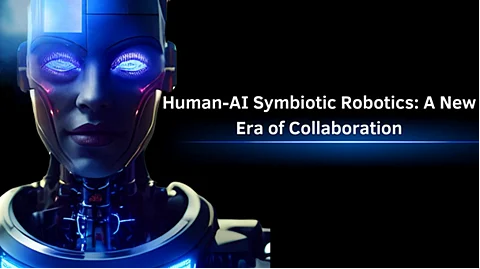

In the evolving landscape of robotics, human-AI symbiotic systems are redefining collaboration between humans and machines. Unlike traditional automation, these systems create a continuous feedback loop where AI enhances human precision, decision-making, and efficiency. This article explores key advancements in symbiotic robotics, drawing insights from the research of Rajarshi Tarafdar, a thought leader in AI-integrated physical systems.
Human-AI symbiotic robots overcome traditional automation by two-way learning between the human operator and AI. The systems employ multimodal sensing, predictive models based on AI, and adaptive actuators to enable seamless real-time collaboration. The AI improves its response through interaction with humans and maximizes operator efficiency.
Such innovation is transforming high-risk industries such as surgery, where accuracy, flexibility, and real-time judgment are imperative. By merging human instinct with the computational strength of AI, such robotics platforms advance safety, accuracy, and performance overall, redefining a new level of automation for other industries.
Multimodal perception is critical in symbiotic robotics so that machines can decode human intent accurately. Combining stereoscopic vision, haptic sensing, and bioelectric signal processing, advanced systems today obtain a better sense of user action. According to research, multimodal techniques cut scene reconstruction error by more than 40% relative to single-modality systems, achieving high precision and responsiveness.
High-definition visual input sharpens spatial perception and haptic and bioelectric feedback give insight into motion and intent. Such synergy enables robots to predict and respond to human movements better, making seamless collaboration possible. With the advancement of multimodal AI, its capability to further intuitive human-machine interaction will fuel developments in assistive robotics, industrial automation, and interactive AI systems.
AI-enhanced prediction makes it easier for seamless coordination in symbiotic systems by predicting human movements and fine-tuning responses. Transformer neural networks process enormous operational histories, allowing real-time identification of complex procedural patterns. Research demonstrates that the systems have more than 90% accuracy in identifying surgical gestures, greatly improving precision, efficiency, and safety.
Through ongoing learning from real-time data, AI enhances its predictive functions, making human-machine collaboration smoother. This innovation is especially effective in high-risk settings such as surgery, where accurate coordination minimizes errors and improves outcomes. With the evolution of AI, predictive accuracy will increasingly transform sectors demanding synchronized human-machine interaction.
Precision robotics increases human ability through highly precise intervention. High-precision robotic actuators have 0.01 N force control resolution and ±0.02mm positional accuracy, making them well-suited for precision-demanding applications such as microsurgery. Dynamic impedance modulation is built into these actuators so that there can be smooth transfer between autonomous action and human guidance.
This adaptability ensures optimal performance across various applications, from delicate surgical procedures to industrial automation. By seamlessly adjusting to user input and environmental conditions, these robotic systems enhance precision, efficiency, and safety. Their integration into symbiotic systems is a major breakthrough in robotics, combining human expertise with machine precision.
One of the central characteristics of symbiotic robotics is the creation of dynamic human-AI interfaces. These incorporate haptic feedback, augmented reality overlays, and adaptive autonomy levels to increase situational awareness and cognitive ease. Multimodal communication approaches have been demonstrated to decrease mental workload by almost 30%, enhancing both efficiency and user experience.
One of the most exciting uses of human-AI symbiotic robotics is in surgery. Surgical systems with AI enhancement dramatically improve procedural precision, cutting critical decision latency by almost 60% and enhancing precision in tissue manipulation. Research shows that these improvements result in shorter hospital stays and fewer post-operative complications, a huge advance in medical technology.
While having huge potential, symbiotic robots struggle with latency management, intent prediction, and safety verification. It is paramount to keep sub-50ms response times, and researchers work constantly to update AI models in order to make them more accurate at prediction. In addition, real-time risk assessment frameworks are being designed in order to maintain safe and reliable performance in varied environments.
As the field advances, future research will focus on bidirectional learning, where AI not only aids human operators but also adapts based on their behavior. Additionally, ethical considerations, including data privacy and autonomy boundaries, will shape the development of these systems. The integration of advanced multimodal communication and predictive modeling will further enhance human-AI collaboration.
In conclusion, human-AI symbiotic robotics marks a transformative shift in collaborative automation, enhancing human expertise rather than replacing it. With ongoing advancements, these systems are poised to revolutionize industries that demand precision and adaptability. As highlighted in Rajarshi Tarafdar’s research, the fusion of human intelligence and AI-driven automation is shaping a future where robotics seamlessly augment human capabilities.
